#house of holstein gottorp
Text

Queen Charlotta as a Princess by Alexander Roslin (oil on canvas, 1774)
Princess Hedvig Elisabet Charlotta married her cousin, Duke Karl, later King Karl XIII in 1809.
Queen Charlotta is known for her diary, which consisted of many fictitious letters between her and her friend Sofie Piper. Her diary contains political comments and detailed descriptions of life at the Royal Court. It was preserved for posterity, and was published in 1902. Her diary has proven a valuable source of material for historical research.
Queen Charlotta also founded Sweden's first school for deaf-mute pupils in Stockholm in 1809.
Photo: Nationalmuseum
#swedish royal family#queen charlotta#princess hedvig elisabet charlotta#duchess of södermanland#hedwig elisabeth charlotta von schleswig-holstein-gottorf#hedwig elisabeth charlotte of holstein gottorp#prinzessin hedwig von schleswig-holstein-gottorf#princess hedwig of holstein-gottorp#house of holstein gottorp#art history#official portrait#swedish royalty#swedish history#royal history
2 notes
·
View notes
Text

Empress Maria Feodorovna and Grand Duchess Xenia Alexandrovna of Russia, 1891
—
Maria Feodorovna (Mariya Fyodorovna; 26 November 1847 – 13 October 1928), known before her marriage as Princess Dagmar of Denmark, was Empress of Russia from 1881 to 1894 as the wife of Emperor Alexander III.
She was the second daughter of Christian IX of Denmark and Louise of Hesse-Kassel.
Maria's eldest son became the last Russian monarch, Emperor Nicholas II.
Maria lived for 10 years after Bolshevik functionaries murdered Nicholas and his immediate family in 1918.
Grand Duchess Xenia Alexandrovna of Russia (6 April [O.S. 25 March] 1875 – 20 April 1960) was the elder daughter and fourth child of Tsar Alexander III of Russia and Empress Maria Feodorovna of Russia (née Princess Dagmar of Denmark) and the sister of Emperor Nicholas II.
#Empress Maria Feodorovna of Russia#Princess Dagmar of Denmark#Grand Duchess Xenia Alexandrovna of Russia#House of Glücksburg#House of Hesse#House of Romanov-Holstein-Gottorp
3 notes
·
View notes
Text
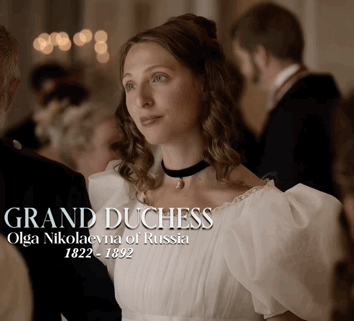
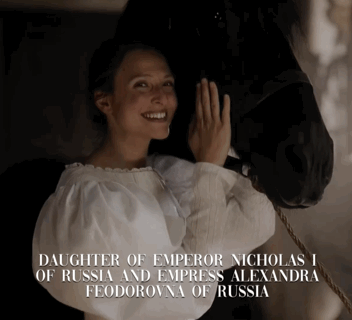
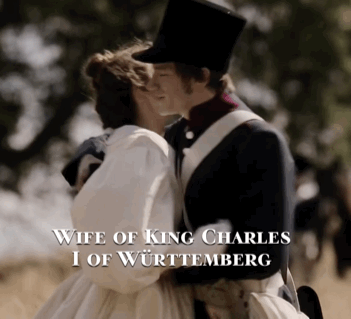

she was also described as one of the most beautiful princesses of her time [her nickname was “ollie”] 🎀
fc: mine
#grand duchess olga#grand duchess olga nikolaevna the elder#grand duchess of russia#queen olga#queen olga of württemberg#queen of württemberg#ehrengard#ehrengard: the art of seduction#alice bier zandén#period drama edit#period edit#history edit#fancast#house of holstein-gottorp-romanov
0 notes
Text




How the last Russian Dynasty were related to European Monarchies (current and former):
The House of Habsburg (Royal Dynasty of Austria) and the House of Holstein-Gottorp-Romanov (Imperial Dynasty of Russia) were distantly related, their common ancestor being Charles Louis, Hereditary Grand Duke of Baden & Francis, Duke of Saxe-Coburg-Saalfeld.
#nicholas ii#alexandra feodorovna#olga nikolaevna#tatiana nikolaevna#maria nikolaevna#anastasia nikolaevna#alexei nikolaevich#romanovs#habsburg#otto von habsburg#charles I of austria#european monarchies
55 notes
·
View notes
Text
The Lost Grand Duchesses: Part 1 - Anna Petrovna

Anna Petrovna was born in January 1708, officially out of wedlock. Her father, Peter ‘the Great’, had six daughters; Ekaterina, Anna, Elizaveta, Maria Natalia, Margarita, and Natalia. Peter planned to marry every daughter that survived infancy to a European house in order to consolidate alliances and friendships with Russia. Peter did not raise Anna, instead giving her to his younger sister Natalia Alexeievna and her husband Alexander Danilovich to raise. Peter’s plan to use the girls as alliance pawns influenced their childhood greatly; their education included embroidery, literature, dancing, and etiquette in order to be perceived as proper and lady-like. By her teenage years, Anna could speak five languages, no doubt to make her more attractive to European houses. Meanwhile, Peter’s sons were taught geography, history, and mathematics.

In 1721, serious marriage was on the table. Karl Friedrich of Schlewsig-Holstein-Gottorp was called to Russia, in order to meet Anna and her father. Karl had just entered his twenties, and his denouncers insisted that he was rude and arrogant. In comparison, Anna was barely thirteen years old, and incredibly shy.
This did not deter Peter, who was incredibly attracted by the idea of a Schleswig-Russian alliance. After a few years of shopping for other potential candidates, the marriage contract was signed. Ironically, the bride was not on the contract, and it was her father Peter and Karl Friedrich who signed. When the men signed the contract, Anna’s right to the Russian throne was instantly revoked.

In 1725, less than a year after the marriage between Anna and Karl Friedrich, Peter ‘the Great’ fell seriously ill. He called for Anna, whom he asked to write his will under his dictation. There has been great speculation over whether Peter planned to name Anna his heir; even though she had been forced to revoke her right to succession when her marriage was arranged, the Tsar of Russia still retained the power to elect his own heir regardless of the marriage contract terms. Peter was unable to speak, passing away shortly after, before declaring his heir. Whether or not Peter desired to make Anna heir remains one of history’s big ‘’what if’ questions.
In 1727, Anna and her husband Karl Freidrich moved to his native Kiel. Anna was deeply unhappy, missing her sister and nephew Peter Alexeievich; the Grand Duchess loved children. She wrote copious letters to her sister, Ekaterina, detailing her depression at being taken away from her home country. The rumours of Karl Freidrich’s arrogance appeared true; he preoccupied himself with affairs, leaving a pregnant Anna isolated.
In February, Anna gave birth to a baby boy, named Carl Peter Ulrich. Just days after, Anna contracted Puerperal fever, then known as ‘childbed fever’, a postpartum infection most likely caused by contaminated medical equipment and/or the medical staff not practicing proper hygiene. Anna became gravely ill, and requested to be buried back in her homeland, alongside her father in St. Petersburg. Her son Carl Peter survived the labour, and outlived his father, becoming the Duke of Holstein-Gottorp. When his aunt Elizaveta, Anna’s sister, died in 1762, Carl Peter became the Tsar of Russia, adopting the name Peter Feodorovich, Peter III.

Despite refusing to parent Anna himself, trying to marry her off when she was a child, and signing a marriage contract without Anna’s signature of consent, Peter claimed that Anna was his ‘favourite daughter.’ Only three of Peter’s fifteen legitimate children survived into adulthood. Anna died when she was only twenty years old. Her brother, Alexei Petrovich was imprisoned and tortured under the order of his father, dying from the torture. Only Anna’s beloved sister Elizaveta survived unscathed - the only out of fifteen siblings.

#the lost grand duchesses#anna petrovna#petrovichi#peter the great#he sounds like a tosser#alexei petrovich#old romanovs#russian history#romanov family#1700s#18th century#royal history#womens history#women in history#peter iii
27 notes
·
View notes
Text
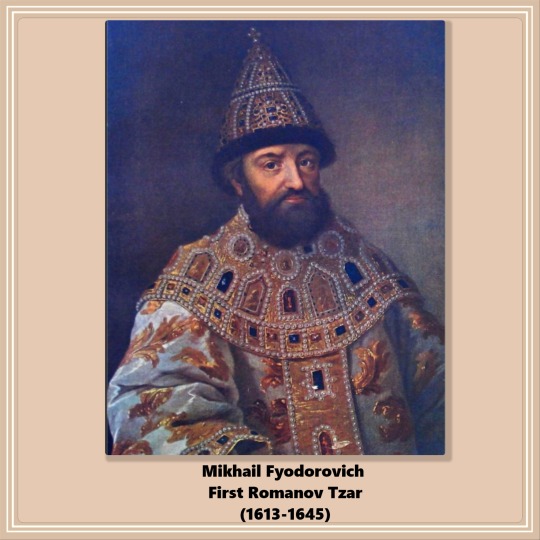






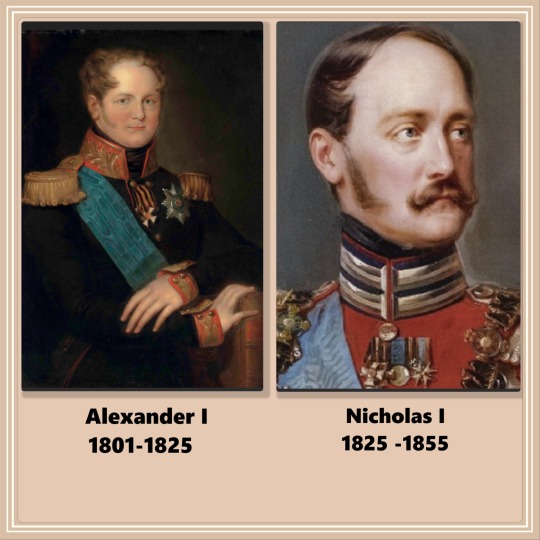

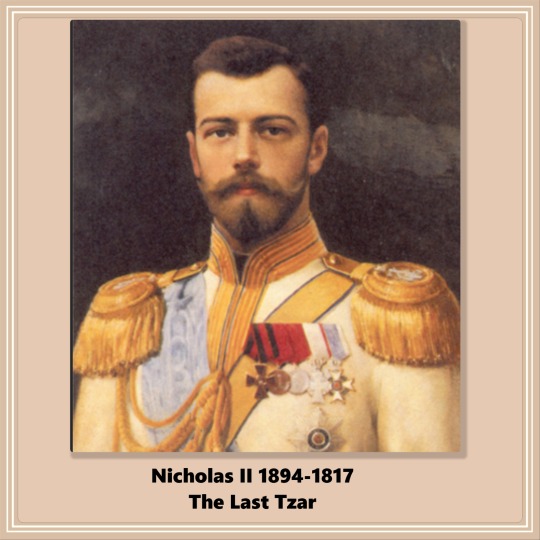
👑The Romanov Dynasty
The Grand Duchy of Moscow under Prince Ivan III was the first unified state on Russian territory. With him began the Rurikid Dynasty (the Rurikid had been around for a long time along hoards of tartars).
The Rurikid ruled from the 1400s until the 1600s. Ivan III can be considered the founder of Russia. While the Rurikid were in power, the Romanovs were boyars (nobles) in their courts. When the Ruriks became extinct, the Romanovs took over. The "Zemsky Sorbor" (a rudimentary parliament) elected Mikhail Feodorovich as the first Romanov Tzar.
The direct male line of the Romanovs ended with Elizabeth of Russia, who was childless. Her nephew Peter III, a member of the House of Holstein-Gottorp (a cadet branch of the German House of Oldenburg that reigned in Denmark), ascended to the throne and adopted his Romanov mother’s house name. Descendants after Elizabeth are sometimes referred to as "Holstein-Gottorp-Romanov."
The above is a gross oversimplification of a very complex course of events.
Highlights about each Romanov Tsar/Tsarina:
👑Mikhail Feodorovich (1613 - 1645): First Romanov Tsar
👑Alexei Mikhailovich (1645 - 1676): Encouraged trade and cooperation with Europe. Father of Peter the Great
👑Feodor III (1676 - 1682): Had very poor health and spent most of his reign in bed
👑Peter I and 👑 Ivan V (1689 - 1785): It was complicated. The two of them were Tsars under the regency of their older sister Sophia.
👑Peter I (1689-1725): Reformed Russia's politics, government, and culture. Made Russia a military power.
👑Catherine I (1725-1727): At the time of Peter the Great's death, the mechanism for succession consisted of the Tsar selecting his successor, but Peter did not elect one before dying. His wife became the Tsarina, but others governed through her.
👑Peter II (1727-1730): Peter's grandson; ascended the throne at 11 and died at 14. The "Privy Council" or "Soviet" ruled through him.
👑Anna Ioannovna (1730-1740): Daughter of Peter's half-brother Ivan. The Privy Council invited her to rule (wanting her to be a puppet), but she disbanded them and ruled herself successfully.
👑Ivan VI (1740-1741): One-year-old son of Ana's niece. She left the throne to him, expecting his mother to govern. Elizabeth, daughter of Peter the Great, deposed him (and his mother.)
👑Elizabeth Petrovna (1741-1761): Last Russian on the Russian throne; her twenty-year reign was successful.
👑Peter III (1761-1762): Grandson of Peter the Great and next in line for the throne after Elizabeth. Ruled for only half a year before being deposed by his wife, Catherine. He was murdered soon after the coup d’etat.
👑Catherine the Great (1762-1796): Her accomplishment went from the Empire’s territorial expansion to political development to the proliferation of sciences. However, the Empire had an enormous external debt by the end of her reign.
👑Paul I (1796-1801): Paul, the son of Catherine the Great and Peter III, became Emperor at 42 after the death of his mother. He started a lot of major military and political reforms. Paul was murdered in a coup d'etat. Paul decreed house laws for the Romanovs (the Pauline laws) – among the strictest in Europe – which established semi-Salic primogeniture and required Orthodox faith for the monarch and dynasts
👑Alexander I (1801-1825): During his reign, Russia defeated Napoleon's forces (which got as far as Moscow in their attempt to conquer Russia.) There was also great development in culture and arts.
👑Nicholas I (1825-1855): Paul I’s third son, younger brother of Alexander. Started railroad construction in Russia, boosting industrialization. Codified Russian laws and reformed finances.
👑Alexander II (1855-1881): His major reforms included the peasant emancipation of 1861, military reform, and the introduction of new types of self-governing village societies and more. Unfortunately, he fell victim to a terrorist after five attempts.
👑Alexander III (1881-1894): Russia didn’t enter any wars in his time. His domestic policy was conservative. He amended the Pauline laws. The economy flourished. But the revolution was brewing below the surface.
👑Nicholas II (1894-1917): His policies were unsuccessful. Established the first official Duma in 1905, but it was too little too late. With the advent of WWI, the Russian Empire ceased to exist. He abdicated. (gcl)
Sources:
Panov, A., Delaroche, P., & Abramuchkin, Y. (2021, July 31). The Complete List of Russian Tsars, Emperors, and Presidents. Russia Beyond. Retrieved June 20, 2023, from https://www.rbth.com/history/334065-complete-list-of-russian-tsars-emperors-rulers-presidents
#russian history#imperial russia#romanov dynasty#Nicholas II#Alexander III#Alexander II#Alexander I#Catherine I#Catherine II#Nicholas I#Paul III#Elizabeth Petrovna#Mikhail Feodorovich#Alexei Mikhailovich#Feodor III#Ivan VI#Peter I#Peter II#Peter III#Anna Ioannovna#Romanov Tsars#gcl
23 notes
·
View notes
Photo

To all those who meet and know her, the Queen of Saxony is a most charming personality, her bright, sunny nature, her kind heart, and her exquisite tact, making her loved and respected by all those who have the honour of her acquaintance; and to those who are privileged to hold daily intercourse with Her Majesty, she has become the ideal of all they hold pure and good in womankind.
Queen Carola is the last direct descendant of the Swedish Royal House of Holstein-Gottorp; her father was the son of King Gustave IV of Sweden, and her grandmother was Stephanie de Beauharnais, the adopted daughter of Napoleon I, who had received the title of Imperial Highness and the rank of a princess from the Emperor, and who married the Grand Duke of Baden.
Princess Carola was born at the Castle of Schonbrunn, near Vienna, not quite three years after the marriage of her parents; and it was in Austria, and partly at Vienna, that the Princess spent her happy youth amongst the kind Austrian friends, who did all in their power to help Prince Gustave to forge the ill fortune that had deprived him of the throne of his ancestors.
Princess Carola, who spent an extremely happy life with her parents in Austria, grew up to be very beautiful with dark hair, blue eyes, and a perfect complexion, her cheerful, sweet expression telling surely of the good qualities of heart that she possessed. She was also gifted with a winning manner, and her bright happy nature caused her to be a favourite with all those who met her.
The beautiful Princess was not without many suitors for her hand, and amongst them came Napoleon III, who thought her particularly suitable to be the future Empress of France, on account of her near relationship to the adopted daughter of the great Napoeloen; but the Princess had no ambition to rule by his side over the French nation, and his suit was rejected by her parents.
The Princess had her own ideas about matrimony, and she was in no hurry to leave home; but when Prince Albert of Saxony appeared on the scene and showed her clearly that she had won his heart all her objections vanished, and it was a very happy young Princess who plighted her troth with him.
The near relationship between the Courts of Saxony and Austria made it easy for Prince Albert to visit Vienna and prosecute his suit with the Princess Carola; and when he was twenty-four and she nineteen years of age, their betrothal was made public, and gave the greatest satisfaction to both families. Prince Albert, the son of the poet King Johann, was both handsome and clever, a venerable Prince Charming, and capable of winning the heart of any beautiful young princess.
The Princess Gustave Wasa, whose health had been failing of late, was especially glad to think of the happy future in store for her beloved daughter, for she had too unselfish a nature to grudge her departure, much as she knew she would miss her tender care.
I have heard from those who knew the Princess Carola at the time of her betrothal, that a happier or more beautiful girl could not have been imagined, and Prince Albert was also perfectly contented with his choice.
The marriage took place at Dresden on June 18, 1853, two months before the happy young bride had completed her twentieth year. As the heir-presumptive to the throne, Prince Albert's marriage was celebrated with great magnificence, all the members of the Saxon Royal Family having been present as well as a large number of the bride's relations.
Prince and Princess Albert of Saxony lived a very happy and peaceful life at Dresden after their marriage, the first sorrow of the Princess being caused by the death of her mother, the sad event happening at a time when she was herself ill and unable to leave her bed. In her sorrow and illness, her aunt, the Princess of Hohenzollern, came to her, and comforted her in the first days of her grief. The friendship and deep love existing between Queen Carola and her aunt Josephine have lasted all her life, and through the first years of her married life this aunt was to her as her mother; and the love and sympathy shown to her, Her Majesty has repaid fully of late years, now that the Princess Dowager of Hohenzollern is old and often alone. Queen Carola never fails to spend many weeks each year with her aunt, and acts to her in every respect as a loving daughter.
For nineteen years the Princess Carola lived in Saxony, with the rank of Cronw Princess; and during this time her affectionate, generous nature won her the affection, not only of her husband;s relations but of his future subjects, who soon learnt to understand the noble and unselfish nature of their future Queen.
On October 29 King John of Saxony died, and his eldest son succeeded him. King John was a Prince of great intellectual capacity, who did his best to make Dresden the center of great thought and a meeting place for the rising geniuses of his time; and through his efforts the Saxon Court improved greatly in tone and became one of the most refined in Germany.
The King and Queen of Saxony, although their lives have been happy and prosperous, have not been exempt from sorrow; and one great grief has been the fact that they have no children to follow in their steps and carry out their good works.
6 notes
·
View notes
Photo

Portrait of Louisa Ulrika of Prussia (1720-1782) as Queen-Dowager by Lorens Pasch the Younger.
#Lorens Pasch the Younger#kingdom of sweden#house of holstein gottorp#konungariket sverige#drottning av sverige#queen louisa ulrika of prussia#haus hohenzollern#full length portrait#full-length portrait
7 notes
·
View notes
Text
GUSTAV III
King of Sweden
(born 1746 - died 1792)
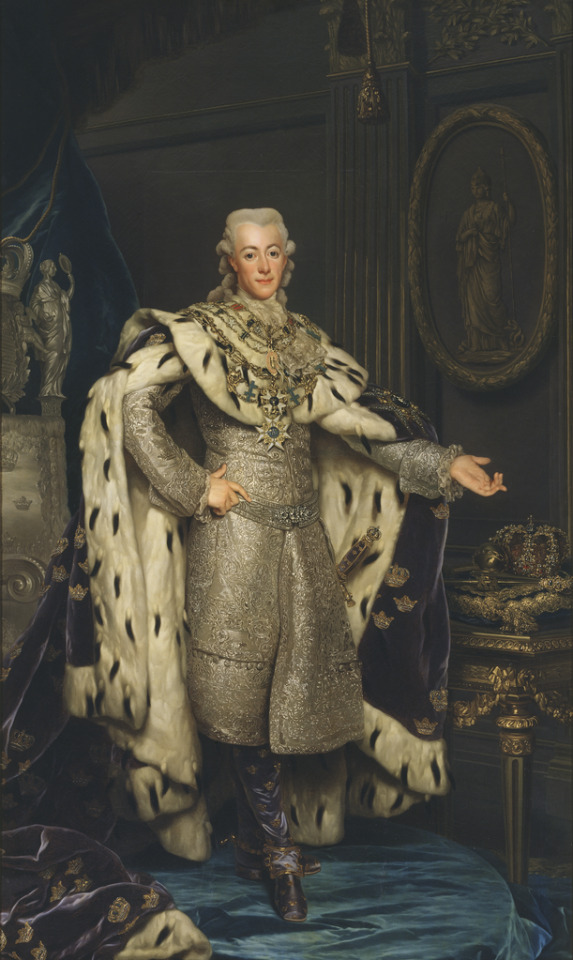
pictured above is a portrait of the King of Sweden, by Alexander Roslin from 1777
-------------------- ~ -------------------- ~ --------------------
SERIES - Facts & Events mentioned in previous posts: the assassination of the King of Sweden was mentioned on Gustav IV Adolf, King of Sweden's post.
-------------------- ~ -------------------- ~ --------------------
GUSTAV was born in 1746, in Stockholm. He was the second child of Adolf Friedrich of Holstein-Gottorp, Prince-Bishop of Lübeck and Princess Luise Ulrike of Prussia, and from birth was a PRINCE OF HOLSTEIN-GOTTORP.
Although his father was the Administrator of the Prince-Bishopric of Lübeck he was born in Sweden because his father had been elected as the Swedish heir in 1743. So, he was effectively a member of the Swedish line of the HOUSE OF HOLSTEIN-GOTTORP.
When his father acceded as Adolf Fredrik, King of Sweden in 1751 he became the CROWN PRINCE OF SWEDEN.
By 1766 he married SOPHIE MAGDALENE, a Princess of Denmark, the eldest daughter of Frederik V, King of Denmark and Princess Louisa of Great Britain. They had two sons, but only one survived into adulthood.
In 1771 he succeeded as GUSTAV III, KING OF SWEDEN. However as the Riksdag (the Swedish Parliament) held more power then the Monarch, following his accession he rebelled against them in the Revolution of 1772, also known as a coup.
Through his blodless coup d'état he had a new Constitution approved, the Instrument of Government of 1772. By this Constitution he got the power to assemble Parliament only by his own wishes, although they still held power to approve wars and taxes.
A Russo-Swedish War started in 1788 and the next year he assembled Parliament again for them to approve money to the War. This Parliament lasted for over three months and the consequences were that he had an amendment of the Constitution passed, known as the Union and Security Act.
This law declared that the Monarch could choose his own Privy Council, gave him the sole power to declare war or make peace and abolished the nobility's privileges (everyone could now hold high positions or own lands, not just the nobility). The Parliament was left only with power to vote on tax and they could not create new laws.
Since the events of 1789 the nobility was unsatisfied with the government and by late 1791 they started plans to assassinate him.
On 16 March 1792, he went to a masquerade ball at the Gustavianska Opera House in Stockholm. That night he received a letter warning of a plot to assassinate him and it is said that he showed up at an open balcony to prove he was fearless.
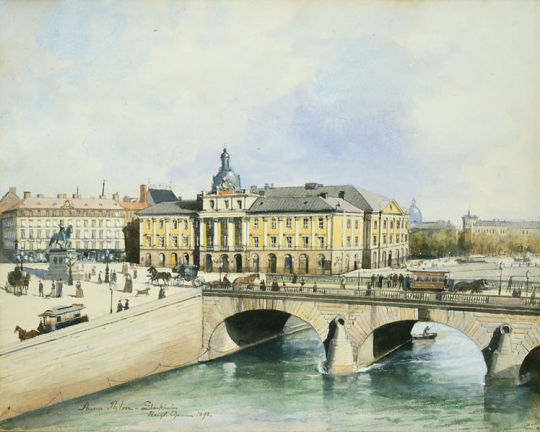
pictured above is a painting of the Gustavianska Opera House, by Anna Palm de Rosa from 1892 (the same year the building was demolished)
Later in the night a former military officer Jacob Johan Anckarström took advantage of the masquerade crowd and shot fire on him.
It was not a mortal shot and the King of Sweden managed to continue to rule until he succumbed to sepsis on 29 March 1792 in Stockholm Palace, aged 46.
-------------------- ~ -------------------- ~ --------------------
He was succeeded on the throne by his only surviving son, the thirteen-year-old Crown Prince Gustav Adolf who acceded as King Gustav IV
His son also had a turbulent reign and was deposed in 1809 by the same Parliament he had endlessly fought, and their descendants were excluded from the Swedish line of succession.
-------------------- ~ -------------------- ~ --------------------
GUSTAV III and his wife SOPHIE MAGDALENE had two children...
Gustav IV Adolf, King of Sweden - husband of Princess Friederike of Baden; and
Karl Gustav, Duke of Småland - died aged six months.
-------------------- ~ -------------------- ~ --------------------
Check the post that originated this one about THE ASSASSINATION OF GUSTAV III, KING OF SWEDEN!
His son Gustav Adolf succeeded him as King of Sweden in 1792.
#gustav iii#gustav iii of sweden#king gustav iii#king of sweden#house of holstein gottorp#holstein gottorp#swedish royals#swedish royal family#royals#royalty#monarchy#monarchies#royal history#swedish history#european history#world history#history#history lover#regicide#18th century#king adolf frederick#history with laura
4 notes
·
View notes
Text

Queen Louisa Ulrika of Sweden (1720 - 1782)
#queen louisa ulrika of sweden#swedish history#swedish royal family#sweden#house of holstein gottorp
0 notes
Photo
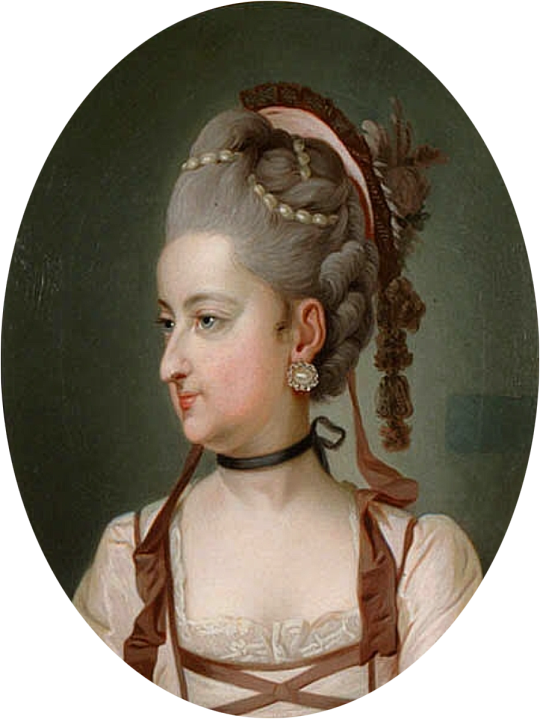
Princess Sophia Albertina of Sweden, Abbess of Quedlinburg.
#Sophia Albertina of Sweden#18th century#18th century art#swedish monarchy#Abbess of Quedlinburg#house of Holstein-Gottorp#long live the queue
24 notes
·
View notes
Photo
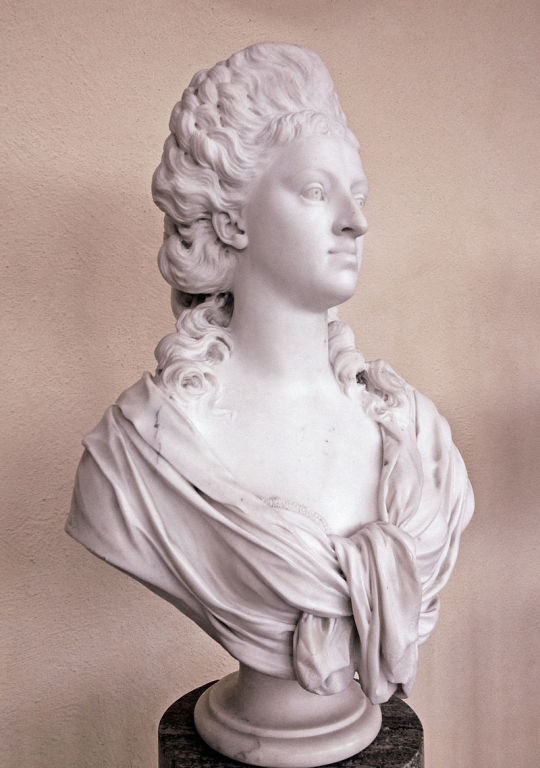
Hedwig Elisabeth Charlotte of Holstein-Gottorp (22 March 1759 – 20 June 1818) was Queen of Sweden and Norway as the consort of King Charles XIII and II. She was also a famed diarist, memoirist and wit. She is known by her full pen name (above), though her official name as queen was Charlotte (Charlotta).
She was born in Eutin the daughter of Duke Frederick August I of Holstein-Gottorp and Princess Ulrike Friederike Wilhelmine of Hesse-Kassel. She grew up in Eutin and married her cousin Charles, Duke of Södermanland, in Stockholm on 7 July 1774 when she was fifteen years old. The marriage was arranged by King Gustav III to provide the throne of Sweden with an heir. The King had not consummated his marriage and had decided to give the task of providing an heir to the throne to his brother.
#Hedwig Elisabeth Charlotte of Holstein-Gottorp#House Holstein-Gottorp#XVIII century#XIX century#people#portrait#statue#bust#photo#photography
7 notes
·
View notes
Text

Their Imperial Majesties Tsaritsa Maria Feodorovna and Tsar Alexander III the Peacemaker.
#maria feodorovna#princess dagmar#dagmar#dagmar of denmark#empress maria feodorovna#tsarina maria feodorovna#tsar alexander iii#alexander iii#russia#imperial russia#russian empire#couple#victorian era#romanov#house of romanov#holstein-gottorp-romanov
117 notes
·
View notes
Text
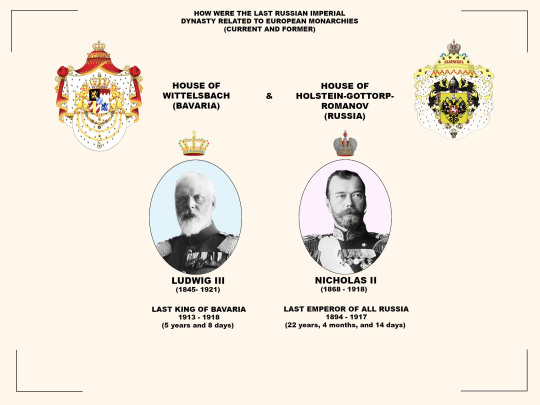


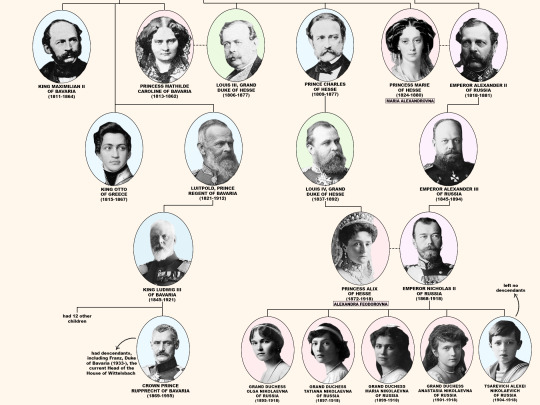
How the last Russian Dynasty were related to European Monarchies (current and former):
The House of Wittelsbach (Royal Dynasty of Bavaria) and the House of Holstein-Gottorp-Romanov (Imperial Dynasty of Russia) were distantly related, their common ancestor being Louis VIII, Landgrave of Hesse-Darmstadt.
36 notes
·
View notes
Text
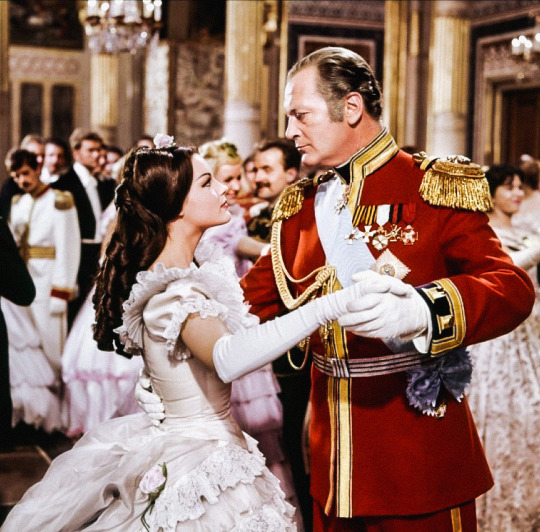
Magnificent Sinner (1959) dir. Robert Siodmak
#magnificent sinner#katis#romy schneider#imperial russia#19th century fashion#19th century#tsar alexander ii of russia#catherine dolgorukova#house of romanov#house of holstein gottorp romanov#house of dolgorukov#ball gown#dancing#royal ball#brunette#curls#half up hair#white lace#white gloves#court attire#1860s#source: historical beauty lily#european cinema#french cinema#robert siodmak
92 notes
·
View notes
Text

First and foremost, let us pay homage to Katherine II, a Prussian Princess by the name of Sophie Friederike Augusta who became one of the most illustrious members of the house of Holstein-Gottorp-Romanov, did as she pleased in her private life and made a substantial difference in the domestic and foreign policy of her country. She very much wanted to be as ‘enlightened’ a monarch as she was a person. Who knows how the history of Russia would have been if her son Paul had not eliminated the possibility of women inheriting the Russian crown? Hail, Ekaterina!
4 notes
·
View notes